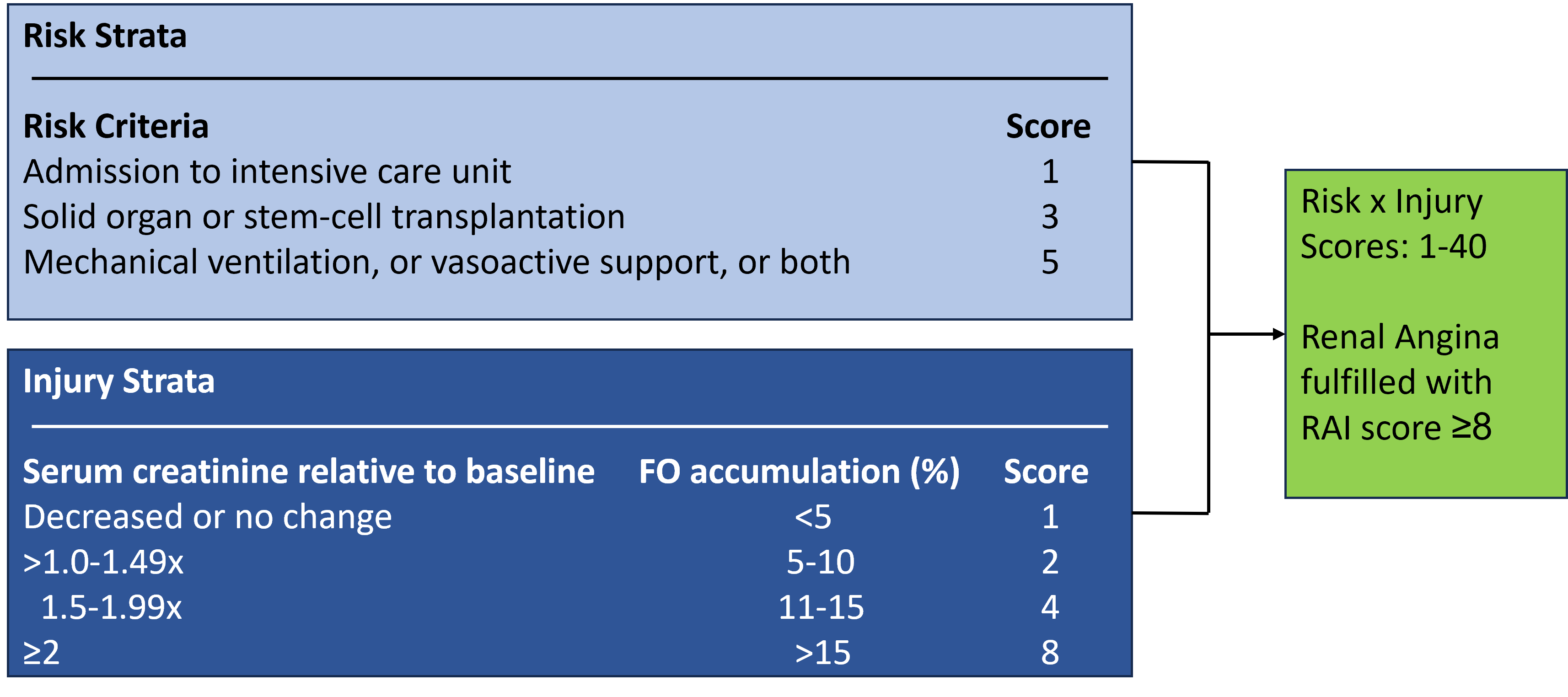The Renal Angina Index (RAI) combines risk and injury strata to assess patients in need of interventional therapy. Recent data has demonstrated improvements in survival and reduced ICU length of stay among survivors. Originally developed by Cincinnati Children's Hospital Medical Center (CCHMC), RAI has been studied and validated across multiple leading pediatric critical care centers1-7.

Data has demonstrated improved sensitivity and specificity of RAI when coupled with uNGAL. This combination has led to the TAKING FOCUS 2 (TF2) study8 with endpoints targeting improvement in patient outcome and health economics.

Results from TF2 demonstrated both an 18.9% absolute survival rate improvement and an 11-day LOS reduction among surviving patients in the PICU who received continuous renal replacement therapy (CRRT)8.
The table below displays the full results from the TAKING FOCUS 2 study. Some of the persistent results worth highlighting are:
| All patients who received CRRT (N=178) | |||||
| Variable | Pre-TF2 (n=71) | Post-TF2 (n=107) | P-value | ||
| Pre-CRRT patient demographics and fluid status | |||||
| Patient age (yrs) | Median [IQR] | 8.1 [2.0, 15.1] | 10.3 [2.3, 17.0] | 0.37 | |
| Patient PICU admission weight (kg) | Median [IQR] | 26.5 [13.3, 49.0] | 30.7 [13.2, 59.0] | 0.21 | |
| PRISM III score at PICU admission | Median [IQR] | 12 [8.0, 16] | 10 [5.0, 17] | 0.23 | |
| Renal angina index at 12 hours of PICU admission | Median [IQR] | 8 [6, 24] | 15 [6, 40] | 0.26 | |
| Time from PICU admission to CRRT initiation (d) | Median [IQR] | 4.5 [2.5, 12.5] | 2.3 [1.4, 5.8] | 0.002 | |
| Fluid accumulation from PICU admission to CRRT initiation (%) | Median [IQR] | 12.1 [4.9, 20.3] | 4.1 [0.6, 12.2] | 0.0008 | |
| PICU fluid accumulation >15% at CRRT initiation | Yes | 26 (36.6%) | 22 (20.6%) | 0.02 | |
| PICU fluid accumulation >20% at CRRT initiation | Yes | 18 (25.4%) | 20 (18.7%) | 0.35 | |
| Patient outcome measures | Pre-TF2 (n=71) | Post-TF2 (n=107) | |||
| Survival to CRRT D/C | Yes | 48 (67.6%) | 74 (69.2%) | 0.87 | |
| Survival to PICU D/C | Yes | 33 (46.5%) | 70 (65.4%) | 0.02 | |
| Pre-TF2 (n=48) | Post-TF2 (n=74) | ||||
| CRRT duration among CRRT survivors (d) | Median [IQR] | 5.8 [2.9, 12.2] | 4.0 [1.9, 9.7] | 0.06 | |
| Pre-TF2 (n=33) | Post-TF2 (n=70) | ||||
| PICU LOS after CRRT D/C among PICU survivors (d) | Median [IQR] | 8.6 [4.5, 13] | 2.6 [0.7, 8.6] | 0.002 | |
| Total PICU length of stay among PICU survivors (d) | Median [IQR] | 24 [12, 39] | 13 [6, 26] | 0.02 |
The RAIDAR Health RAI Service is a cloud-based software as a service (SaaS) that provides Clinical Decision Support (CDS) of the RAI protocol developed at CCHMC.
To learn more about adopting RAI, email us at [email protected].
© 2025 RAIDAR Health LLC